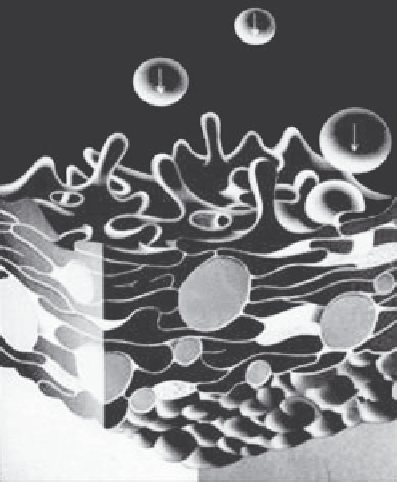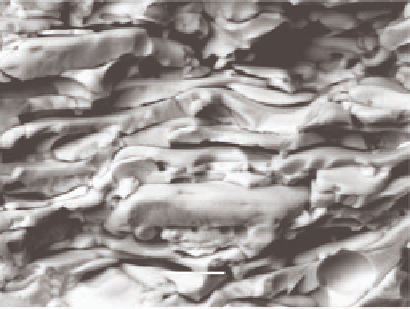Biomedical Engineering Reference
In-Depth Information
(a)
Droplet
(b)
Void
Unmelted
particle
Substrate
20 kV ×2, 000
10µm
14 4.5 Pa
FIGURE 4.2
Buildup process of a coating by accumulation of individual splats (a) and a typical cross-sectional view of plasma
sprayed zircon coating showing the layered structure. (From Gordon England, http://www.gordonengland.co
.uk/tsc.htm 2010; Li, H., unpublished data, 2004. With permission.)
significant advancement in spray technique development, and hence further improved
particle variables (i.e., temperature and velocity) have been achieved.
Among the thermal spray processes, plasma spray and HVOF are the two most widely
used processes for HA coating deposition (Figure 4.3). In plasma spraying, the torch oper-
ates with a central thoriated tungsten cathode and a water-cooled annular copper anode.
TABLE 4.1
Comparison between Different Thermal Spray Techniques Used to Produce Ha-Based Coatings
Flame
HVOF
APS
IPS
VPS
RF
Gas temp. (°C)
P
= 100 kPa
P
= 25 kPa
P
= 7 kPa
2700
-
-
3,000
-
-
14,000
-
-
14,000
-
-
-
10,000
5,000
-
8,000
-
Particle vel. (m/s)
Al
2
O
3
, 30 μm
P
= 100 kPa
P
= 25 kPa
P
= 7 kPa
70
-
-
350
-
-
230
-
-
250
-
-
-
380
300
-
30
-
Flame length (cm)
P
= 100 kPa
P
= 25 kPa
P
= 7 kPa
<10
-
-
<20
-
-
<7
-
-
<10
-
-
-
<15
<50
-
<15
-
Part. Injection mode
Axial
Axial
Perpendicular to the plasma jet and
downstream of the arc
Axial









Search WWH ::

Custom Search